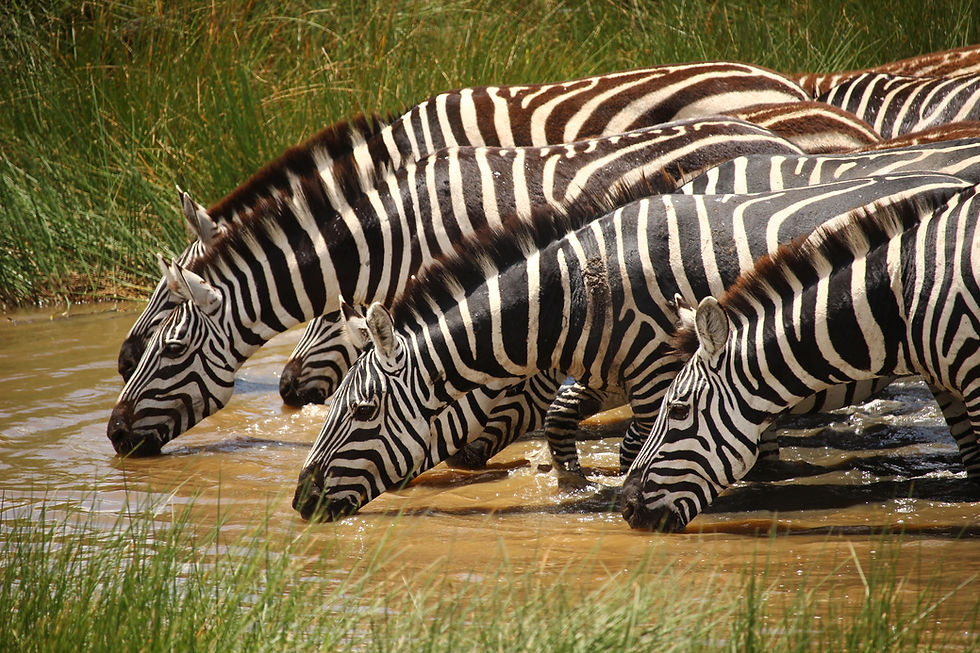Zebras are herbivorous animals that primarily feed on tough grasses and other vegetation found in their natural habitat. Their diet can vary depending on the season and the availability of food, but they are well-adapted to survive on a diet of tough, fibrous plant material.

In the wild, zebras graze for several hours each day, typically during the early morning and late afternoon when temperatures are cooler. They use their teeth, particularly their ridged molars, to slice through tough grasses and other vegetation. Zebras are also known to feed on leaves, bark, and shoots from trees and bushes when grass is scarce.
Zebras are well-suited for grazing on tough grasses due to their unique dental structure. Their teeth have a pattern of ridges and valleys that are specifically designed to grind and shear plant material. The ridges on their teeth are more pronounced than those found on other herbivores, such as horses or donkeys, which makes them particularly well-suited for feeding on tough grasses.
In addition to grasses, zebras also consume a variety of other plant material, including herbs, shrubs, and twigs. During periods of drought, they are known to feed on cactus and other succulents that can provide much-needed moisture.

Zebras are selective feeders, which means that they are able to pick and choose which plants they consume based on their nutritional content. They are particularly fond of grasses that are high in protein, which is necessary for their growth and development.
Zebras are able to extract nutrients from tough, fibrous plant material due to their unique digestive system. They have a four-chambered stomach that allows them to break down cellulose and other tough plant material through a process of fermentation. This fermentation process takes place in the hindgut, where bacteria break down the cellulose and release nutrients that the zebra can then absorb.
In addition to their unique digestive system, zebras are also able to obtain water from the vegetation they consume. They are able to extract moisture from tough grasses and other plants through a process of osmosis, which allows them to survive in areas where water is scarce.

Baby zebras, like all mammals, rely on their mother's milk for the first few months of their life. The milk provides them with all the nutrients they need to grow and develop. However, as they begin to wean and eat solid food, their diet will gradually shift to a diet of tough grasses and other vegetation that adult zebras consume.
During the first few weeks of their life, baby zebras will feed exclusively on their mother's milk. The milk provides them with essential nutrients, such as protein, fat, and carbohydrates, that are necessary for their growth and development. The mother's milk also contains antibodies that help to protect the baby zebra from disease and infection.
Around 4-6 months of age, the baby zebra will begin to nibble on grasses and other vegetation. This is the beginning of the weaning process, as the baby zebra begins to transition to a diet of solid food. At this stage, the baby zebra's diet will consist mainly of soft, tender shoots and leaves that are easier for them to chew and digest.

As the baby zebra grows and develops, their diet will gradually shift to tougher grasses and other vegetation. This transition is aided by the development of their teeth, which will grow and become more efficient at grinding tough plant material.
By the time the baby zebra is 6-8 months old, they will have a full set of milk teeth that are capable of grinding and chewing tougher plant material. At this stage, their diet will consist primarily of grasses, with some leaves and shoots from trees and bushes.
As the baby zebra continues to grow and mature, their diet will become increasingly selective. They will learn to identify and select the most nutritious grasses and other vegetation based on their taste and texture. This selective feeding behavior helps to ensure that the baby zebra is getting all the necessary nutrients from their food.

By the time the baby zebra is fully weaned, they will have developed a diet that is similar to that of adult zebras. Their diet will consist primarily of tough grasses and other vegetation that is abundant in their natural habitat. They will continue to refine their feeding behavior throughout their life, selecting the most nutritious plants and grazing at the most opportune times of the day.
In conclusion, zebras are herbivores that primarily feed on tough grasses and other vegetation found in their natural habitat. Their unique dental structure and digestive system allow them to extract nutrients from tough, fibrous plant material, and they are able to survive in areas where water is scarce by obtaining moisture from the vegetation they consume. Understanding what zebras eat is crucial for their survival, and conservation efforts must focus on preserving their natural habitat and the vegetation that they rely on for food.
Comments